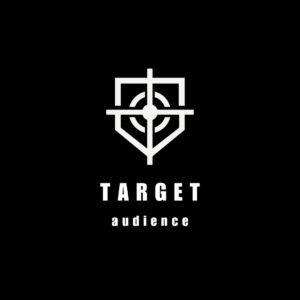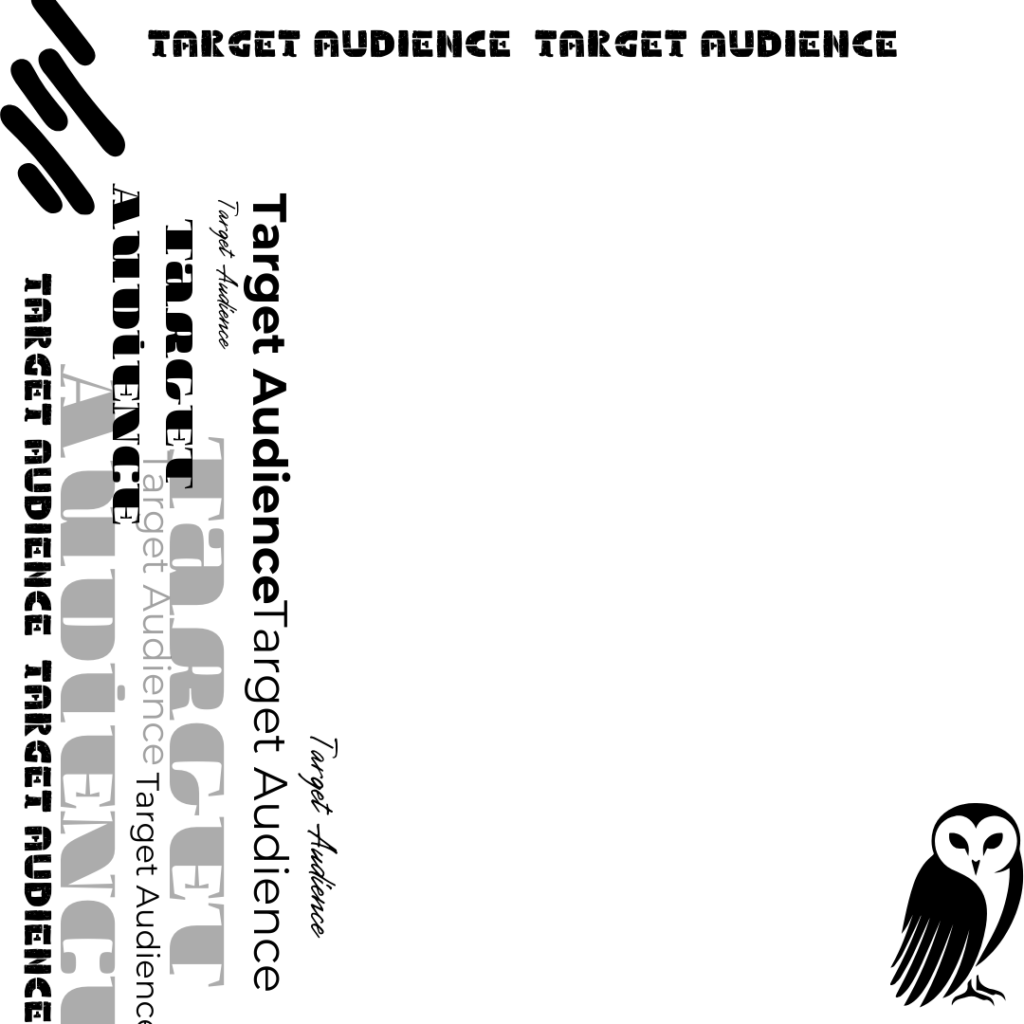
People in the world are very different. Men and women, different roles, different needs and goals in life. There are situations, crises in the outside world that create additional groups of buyers and all this is a simplification and systematisation of rather complex processes – the choice of a person, influence on his choice and preferences. Target audience is a certain group of consumers that a business seeks to reach with its products, services or marketing efforts, advertising and attention. It is important to understand that the target audience is always people, that is, it cannot be a ‘business’ making a decision to purchase some accounting software from a company – it is still a person making decisions. By understanding who the target audience is, marketers can create more personalised and effective strategies that resonate with potential customers, increase engagement and drive sales. And most importantly, if you make friends with your target groups, you can build long-term relationships (not in all businesses, but still)
Understanding the target audience allows businesses to: Develop products and services that meet the specific needs of their customers. Create personalized messaging that resonates with potential buyers. Select the most effective channels for advertising and content distribution. Optimize marketing budgets by focusing resources on the most promising segments.
Lorem ipsum dolor sit amet, conse ctetur eget nisi gravida, tristique the sed, eleifend nibh mauris alora tolos dolty eicitur.
Lorem ipsum dolor sit amet, conse ctetur eget nisi gravida, tristique the sed, eleifend nibh mauris alora tolos dolty eicitur.
Lorem ipsum dolor sit amet, conse ctetur eget nisi gravida, tristique the sed, eleifend nibh mauris alora tolos dolty eicitur.
Lorem ipsum dolor sit amet, conse ctetur eget nisi gravida, tristique the sed, eleifend nibh mauris alora tolos dolty eicitur.
Lorem ipsum dolor sit amet, conse ctetur eget nisi gravida, tristique the sed, eleifend nibh mauris alora tolos dolty eicitur.
Enhanced Customer Understanding: Knowing your target audience means you understand their wants, needs, and problems. This knowledge helps you develop products or services that solve their specific challenges. It also guides the creation of marketing messages that speak directly to their pain points, desires, and motivations.
More Effective Marketing: By focusing on a defined group of potential customers, marketing efforts become more effective. Campaigns tailored to a specific audience are more likely to attract attention, foster engagement, and encourage action. Generic marketing often fails to connect with customers on a personal level, resulting in lower engagement and conversion rates.
Optimized Resource Allocation: Marketing budgets can be limited, so it’s important to spend resources wisely. Identifying a target audience allows businesses to invest in the most relevant advertising channels and create content that appeals directly to those who are most likely to buy. This optimization not only saves money but also increases the return on investment (ROI).
Improved Product Development: Understanding your target audience can also inform product development. Insights into customer preferences, problems, and needs can guide the design and features of products or services that are more likely to succeed in the market.
Conduct Market Research: Start by gathering information about the market and industry trends. Market research helps identify potential segments that align with your product or service. Look at competitors, industry reports, and customer feedback to gain insights into the types of consumers who may benefit from what you offer. Analyze Your Current Customers: If your business is already up and running, your existing customers can provide valuable information. Use customer data, surveys, and feedback to identify common characteristics and preferences among those who already engage with your brand. This analysis can help you refine your target audience or identify new segments to explore. Create Buyer Personas: A buyer persona is a semi-fictional representation of your ideal customer based on research and real data. Creating detailed personas that include demographics, psychographics, behaviors, needs, and challenges helps you visualize and understand your target audience. The more specific your personas, the easier it becomes to tailor your marketing efforts. Segment Your Audience: Not all customers are the same, even within a defined target audience. Segment your audience into smaller groups based on shared characteristics, behaviors, or needs. For example, a fitness brand might have different segments for beginners, experienced athletes, and older adults looking for low-impact exercise options. Tailor your messaging and strategies to each segment to maximize engagement and conversions. Test and Refine: Target audience definitions are not static; they evolve over time as markets change and new trends emerge. Test your marketing strategies with different segments and analyze the results. Use data from campaigns, website analytics, and customer feedback to refine your target audience and optimize your approach.

A target audience is a specific segment of the market that shares common characteristics, such as demographics, interests, behaviors, needs, or pain points. This group is the most likely to be interested in a company's products or services and is therefore the primary focus of marketing efforts.
Defining a target audience involves analyzing various aspects of potential customers to create a detailed profile. The following are key components to consider when identifying a target audience:
Demographics: This includes basic information such as age, gender, income level, education, occupation, marital status, and family size. Demographic data provides a foundational overview of the type of people you are trying to reach.
Psychographics: Beyond demographics, psychographic data digs deeper into the interests, values, attitudes, lifestyles, and personality traits of your audience. This information reveals what drives their purchasing decisions. For instance, a brand selling eco-friendly products may target consumers who value sustainability and are willing to pay a premium for environmentally-friendly options.
Geographical Location: Knowing where your target audience lives is vital for tailoring marketing messages and choosing distribution channels. Location can influence preferences, buying habits, and needs. For example, a winter clothing brand would likely target consumers living in colder climates.
Behavioral Traits: Understanding consumer behavior is essential in identifying the target audience. Behavioral traits include past purchasing habits, brand loyalty, online activity, and shopping preferences. Analyzing these behaviors helps in predicting how your target audience might interact with your brand. For example, if data shows that a significant portion of your audience shops online, investing in a robust e-commerce platform becomes a priority.
Needs and Pain Points: Identifying the specific problems or needs of your target audience allows you to position your product or service as the ideal solution. If you understand what your customers struggle with, you can craft messaging that directly addresses their challenges. For example, a software company targeting small businesses might focus on pain points such as limited budgets, time constraints, and the need for user-friendly solutions.
Content Creation: Knowing your target audience allows you to create content that resonates with their interests and needs. For example, if your target audience is young professionals interested in personal finance, you might create blog posts, videos, or social media content focused on budgeting tips, investing strategies, or managing student loans.
Ad Targeting: With a clear target audience, you can use targeted advertising to reach specific segments on platforms like Google, Facebook, Instagram, and LinkedIn. For instance, Facebook’s advertising tools allow you to target users based on demographics, interests, behaviors, and even location, ensuring your ads are seen by the right people.
Personalized Messaging: Crafting personalized marketing messages that speak directly to your target audience’s pain points and desires increases the likelihood of engagement. Tailor your messaging to reflect the language, tone, and style that resonate with your audience.
For example, a casual, conversational tone may work best for a younger audience, while a more formal approach might be suited for professionals in a B2B setting.
Product Development and Positioning: Insights from your target audience can guide product features, design, and positioning. By aligning your product with the preferences and needs of your audience, you increase its appeal and market fit. For example, a skincare brand targeting individuals with sensitive skin might highlight hypoallergenic ingredients and dermatological testing in its marketing.
Defining and understanding your target audience is fundamental to any successful marketing strategy. It enables businesses to create personalized and relevant marketing messages, optimize resources, and develop products that align with customer needs. While identifying a target audience requires research, analysis, and continuous refinement, the benefits of focusing on the right consumers far outweigh the efforts. By tailoring marketing efforts to a specific group of customers, brands can build stronger connections, drive engagement, and ultimately, achieve better business results.
Social media marketing is a powerful tool for building brand awareness, engaging with target audiences, and driving conversions
SEO is one of the most effective long-term digital marketing strategies for increasing visibility, traffic, and credibility.
PPC advertising is a highly effective way to generate immediate traffic, leads, and sales through paid placements on search engines and social platforms.